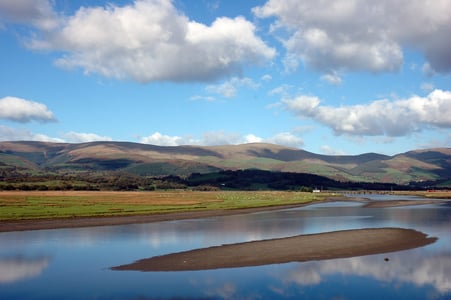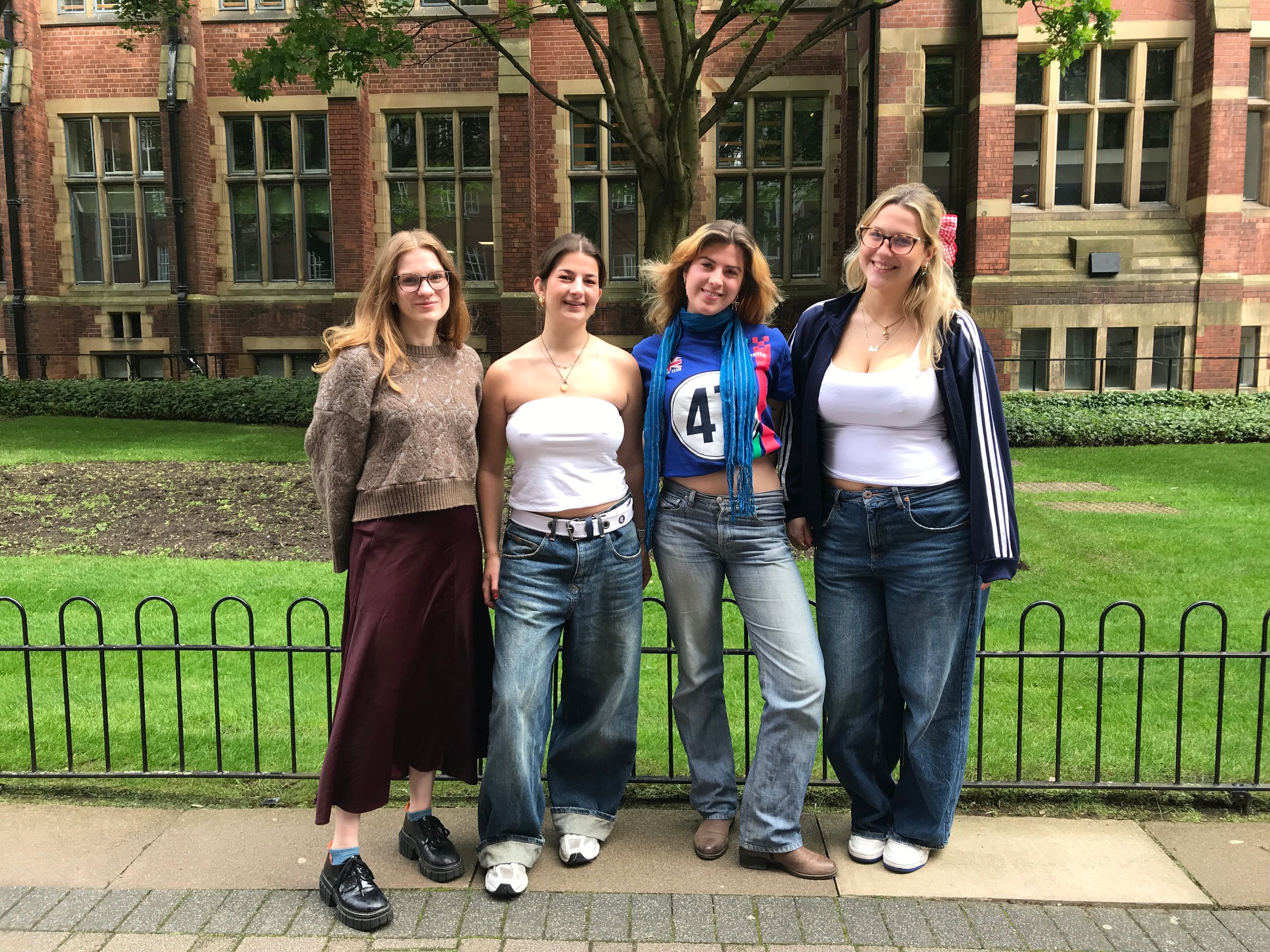Alice Tenney – BA Liberal Arts, University of Leeds – May 2024

Starting points: biocultural heritage and sustainable development
Throughout history there has long been a disconnect between nature and culture, particularly in Western countries. This disconnect is exemplified in the United Nations’ Sustainable Development Goals (SDGs), that seemingly overlook the “inextricable link” between nature and culture, as explored in our first blog ‘Localisation of the SDGs in UK Cities: Is There a Place for Culture?’. According to Alexandria Poole’s report ‘Where is Goal 18? The Need for Biocultural Heritage in the Sustainable Development Goals’, biocultural heritage is the key to addressing this gap.
As defined by Karl-Johan Lindholm and Anneli Ekblom’s report ‘A Framework for Exploring and Managing Biocultural Heritage’, the term ‘biocultural heritage’ captures the interdependence of natural and cultural heritage; allowing for more holistic management of sites by understanding landscapes as complex, long-term interactions between both biological and human factors.
This blog begun through my personal belief in the nature-culture connection, that was backed up by insights from the ‘Heritage and Our Sustainable Future’ conference disseminated in the ‘Biocultural Heritage and Landscapes: Linking Nature and Culture’ policy brief. This global conference, organised as part of the PRAXIS project in partnership with the UK National Commission for UNESCO, promoted biocultural heritage as a key area of interest; instrumental in promoting a connection between culture and sustainable development and crucially bridging the nature-culture divide.
As a bridge between global and local action, UNESCO designated sites provide great case studies for exploring the connection between culture and sustainable development. Join me as I dive into the biocultural heritage of the Dyfi Biosphere Reserve in Mid-Wales. In conversation with Andy Rowland, Secretariat of ecodyfi (an independent locally controlled development trust dedicated to community regeneration in the area), I explore how biocultural heritage acts and is supported locally. This blog ultimately addresses the question: how can biocultural heritage be mobilised to support sustainable development?
What is the Dyfi Biosphere?
According to UNESCO, biosphere reserves are areas of land that are managed holistically to improve the relationship between humans and nature. The Dyfi Biosphere covers the catchment area of the River Dyfi and the town of Aberystwyth in Mid-Wales. It includes the protected natural areas of Cors Fochno, Coed Cwm Einion, and Pen Llŷn a’r Sarnau as well as historical towns such as Machynlleth. Thus, a wealth of natural and cultural heritage resides in the area.
The Dyfi biosphere has a voluntary biosphere designation rooted in an eagerness of the local community to foster a more sustainable region. The biosphere is coordinated by the Dyfi Biosphere Partnership – a network of independent, local and national organisations that collaborate on projects across the region. The partnership’s vision is as follows:
“The Dyfi Biosphere will be recognised and respected internationally, nationally and locally for the diversity of its natural beauty, heritage and wildlife, and for its people’s efforts to make a positive contribution to a more sustainable world. It will be a self-confident, healthy, caring and bilingual community, supported by a strong locally based economy.”
From my conversation with Rowland, it seems that protecting, enhancing and connecting natural and cultural aspects from the outset was fundamental to the mission of all UNESCO biospheres. He said that each biosphere has the “latitude to interpret [UNESCO’s mission] according to local needs”, thus the Dyfi paid particular attention to the Welsh language culture that has a large part to play in the heritage of the Dyfi Biosphere and the health of which is massively under threat across all of Wales.
What is the impact of the Dyfi’s UNESCO Biosphere Designation?
Due to the intricacies of the various partnerships working within the biosphere, it is difficult to pick apart the exact role that the UNESCO designation has within sustainable development in the area.
The region already has a lot of interest in sustainability related work – largely due to the over 50 year existence of the Centre for Alternative Technology and philosophically driven responsibility of stewardship by the farming community – meaning it is hard to ascertain what would have happened anyway, without the designation. Despite this, Rowland noted the elevated profile that the UNESCO designation contributes towards developing sustainable futures in the region, particularly through the attention to the biosphere mission provided by UNESCO. He also noted the collaborative partnerships that the designation supports, such as the Tourism Association and Education Group, highlighting the designation’s biggest value as “bringing people together”.
Ostensibly, the UNESCO designation provides a crucial role in the cohesion of the activities of the biosphere, united under one set of aims, people and nature and the relationships between them is placed at the forefront of action. Biocultural heritage seems to play a large part in this, by promoting a more bioregional outlook and putting local communities and their unique histories heart of development. As highlighted by Rowland, the question for us here is: how, given the complex “jigsaw” of different communities and heritage, can we “foster better connections between people in the natural world”?
Linking biocultural heritage and sustainable development: what is being done in the Dyfi Biosphere?
There are several projects (both historical and future) that inherently link biocultural heritage and sustainable development in the Dyfi. Most notable among these is the Tirwedd Dyfi project run by ecodyfi (2009-2011), that explored the relationship between Welsh language, culture and nature through the medium of arts-based events such as literary competitions, poetry evenings and school workshops.
According to Rowland, the project worked with both Welsh speakers and learners and was “based on the hypothesis that there’s either a risk or a perception, that for some Welsh speakers, that a connection with the land is weakening. And could do with bolstering or reinventing.”
The final report of the project noted the enthusiasm of the participants. It is apparent that this initiative not only had a positive impact on community cohesion and wellbeing, but that connecting people with their biocultural environments has fostered a more connected and rooted community.
“Sense of place is an intrinsic part of their culture, and they were keen to express it.” (Tirwedd Dyfi, Final Report, 2011)
Another proposal is still waiting to see the light of day, aimed to bring together all the stakeholders and communities who had an interest in the Dyfi river itself, partly to address key environmental issues such as invasive species control and water quality. It also intended to create a programme of activities around the river and people’s historical and spiritual connection to it, a sort of river festival, if you like. Rowland noted it is an attempt to “grow a consciousness” of a bioregional sense of home and community rooted in the Dyfi Valley.
Despite its initial rejection, it is my hope that this project will be granted funding and get underway; it seems like a crucial piece in linking people, heritage, culture and the land and thus promoting a more sustainable future for the river and the communities that rely upon it.
So, how can biocultural heritage support sustainable development?
From the work being done in the Dyfi Biosphere it is clear that there are huge benefits that arise from connecting local communities with their native land and heritage. Particularly in the case of fostering bioregional identity as it helps people understand the intrinsic link between who they are and the land each of us rely on. The collaborative power of UNESCO designations undoubtedly supports the mobilisation of biocultural heritage for holistic sustainable development. However, according to Rowland, more can still be done:
“…not just to increase awareness and connections locally, but also tourism offers as well, that makes a great deal of impact, and has been the subject of international English and French projects recently between biospheres.”
There are still huge developments that need to be initiated to support biocultural heritage and its vital role in creating environmental awareness, and there are also many barriers that are making these developments harder to come by.
In the Dyfi, like in many natural and cultural sites worldwide, funding is a huge roadblock that projects face, particularly in the post-Brexit UK as many European funds such as Interreg have been taken away. It has also become increasingly difficult to set up international collaborations without this funding, as well as reducing shared pools of knowledge.
Despite these trials, communities, organisations and coordinators such as Rowland are still optimistic regarding the future. I asked Rowland how crucial the role of biocultural heritage is in sustainable development:
“It’s bound to help. That’s obviously not a solution, but I think if we’re more understanding of our environments, what we depend on, basically our natural resources, then great. We can choose to ignore that for short term expediency, exploit it, but it becomes increasingly harder to ignore. There is a need to pay due attention to that heritage and make sure it’s protected.”
This restrained positivity, gives me a sense of hope that more will be done to support initiatives promoting our historical connection to the land and their contribution to a sustainable future.
Acknowledgements
Many thanks to Andy Rowland for supporting this research with his discussion and insights.
Exploring Sustainable Development in UK UNESCO Designated Sites

This series of blogs, a continuation from the initial publication by the Horizons Institute at the University of Leeds, has been authored by four second-year BA Liberal Arts students as part of the project ‘Exploring Sustainable Development in UK UNESCO Designated Sites’, for the module ‘FOAH2001: Research Placement’ at the University of Leeds. The project was supervised by Dr Francesca Giliberto, a research fellow specialising in management, cultural heritage, and sustainable (urban) development at the Leeds University Business School, and is developed in partnership with the UK National Commission (UKNC) for UNESCO.
Over the past eight months, these students have explored culturally based sustainable development frameworks within specific UNESCO designated sites across the UK. Their investigation has focused on understanding how these sites navigate interconnected challenges and function as a bridge for local-to-global initiatives. Throughout their research journey, the students have actively engaged with site managers, practitioners, project evaluators, the UKNC for UNESCO, and various stakeholders. Their aim has been to discern the intricate interplay between diverse sectors and objectives, with a particular focus on the practical localisation of the United Nations’ Sustainable Development Goals (SDGs) through the lens of cultural preservation and promotion.

